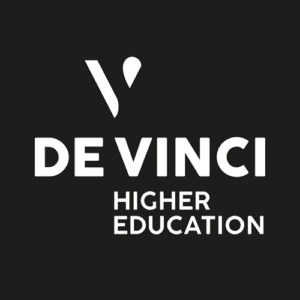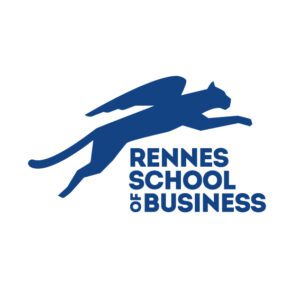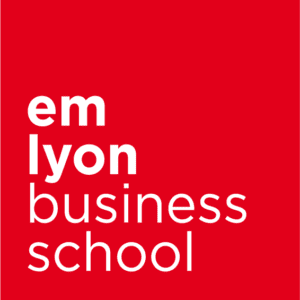Cette activité vise à développer la capacité des étudiants à évaluer de manière critique les sources d’information et le contenu généré par l’IA. Les étudiants évaluent des documents en utilisant des critères d’authenticité et de fiabilité, afin de renforcer leur esprit critique face à la prolifération de l’information et à l’utilisation croissante de l’IA.
💡 Sélectionnez le modèle dans ChallengeMe pour lancer cette activité en un clic !
L’objectif principal est de développer chez les étudiants des compétences essentielles en matière d’évaluation de l’information, de vérification des sources et d’analyse critique du contenu, qu’il soit produit par des humains ou par l’IA.
Développement de l’esprit critique – Les étudiants apprennent à analyser l’information de manière objective et approfondie.
Amélioration des compétences de recherche – Les étudiants deviennent plus habiles à identifier des sources fiables et pertinentes.
Sensibilisation aux biais – Les étudiants apprennent à reconnaître et à éviter les biais dans l’information.
Préparation au monde numérique – Les étudiants sont mieux équipés pour naviguer dans l’ère de la désinformation et de l’IA.
Renforcement de la pensée indépendante – Les étudiants développent leur capacité à former leurs propres opinions basées sur une analyse critique.
Amélioration des compétences en littératie numérique – Les étudiants deviennent plus compétents dans l’utilisation et l’évaluation des technologies de l’information.
💡 Sélectionnez la collection de critères associé à ce cas d’usage dans la plateforme
Les étudiants déposent leurs travaux sur la plateforme en suivant les consignes définies par l’enseignant.
Les étudiants ou enseignants évaluent les travaux en utilisant les critères d’évaluation définis par l’enseignant.
Ils peuvent également donner leurs feedbacks.
Les étudiants évaluent les membres de leur groupe en utilisant les critères d’évaluation définis par l’enseignant.
Ils peuvent également donner leurs feedbacks.
Les étudiants indiquent, à travers différents critères, s’ils ont trouvé les retours pertinents ou non.
Ils peuvent également fournir un commentaire écrit à leurs correcteurs
Les étudiants découvrent les évaluations et feedbacks reçus en fonction des options d’affichages définies.
Choisissez la méthode d’évaluation qui vous convient le plus.
Vous pouvez utiliser une activité « simple » ou ajouter des phases de dépôts ou d’évaluation supplémentaires.
Pourquoi ne pas utiliser notre assistant IA pour guider les étudiants dans leur feedback. L’assistant peut leur donner des éléments pour améliorer leur feedback et le rendre plus constructif.
⬜ Fournir des exemples variés – Présentez un éventail de sources d’information, y compris des exemples de désinformation et de contenu généré par l’IA.
⬜ Enseigner les techniques de vérification – Formez les étudiants aux méthodes de fact-checking et de vérification des sources.
⬜ Encourager le débat – Organisez des discussions sur des sujets controversés pour stimuler l’analyse critique.
⬜ Utiliser des études de cas – Présentez des cas réels de désinformation ou de mauvaise utilisation de l’IA pour illustrer l’importance de l’esprit critique.
⬜ Promouvoir la réflexion métacognitive – Encouragez les étudiants à réfléchir sur leur propre processus de pensée et de prise de décision.
⬜ Intégrer des exercices pratiques – Proposez des activités où les étudiants doivent évaluer et comparer différentes sources d’information.
⬜ Collaborer avec des experts – Invitez des professionnels des médias ou des spécialistes de l’IA pour partager leur expertise.
⬜ Suivre l’évolution des compétences – Mettez en place un système pour évaluer la progression des étudiants dans leur capacité d’analyse critique au fil du temps.









ChallengeMe propose des critères d’évaluation clairs et précis que vous pouvez personnaliser. En outre, l’anonymat des évaluations et la possibilité d’avoir plusieurs évaluateurs par travail aident à garantir l’équité.
Nous recommandons également de préparer les étudiants, de leur expliquer les objectifs, voir de coconstruire avec eux la grille critériée en prenant exemples sur d’anciens travaux.
Absolument, le travail de groupe est possible, aussi bien en phase de réponses (dépôt d’un fichier en groupe par exemple) que en phase d’évaluation (les étudiants doivent se mettre d’accord sur le feedback et les évaluations)
Nous avons plusieurs contenus disponibles. Dans la plateforme, les étudiants sont accompagnés sur l’activité avec des conseils pour donner des feedback pertinents. Nous mettons aussi à disposition des enseignants des documents qu’ils peuvent utiliser pour présenter l’activité aux étudiants.
Vous choisissez ! Vous pouvez mettre en place du formatif uniquement (pas de notes, uniquement des feedback) ou bien construire une note avec de la pondération sur les critères, des bonus/malus selon certains événements (retard par exemple) ou encore pondérer la note de l’évaluation par les pairs avec celle de l’enseignant.
Nous travaillons avec + de 90 écoles en France, Suisse, Belgique et au Québec. Vous trouverez sur notre site plusieurs retours d’expériences d’autres écoles sur nos activités.






Nous vous proposons d’essayer gratuitement ChallengeMe. N’hésitez pas à nous contacter directement pour toutes vos questions, notre équipe sera ravie de vous aider !